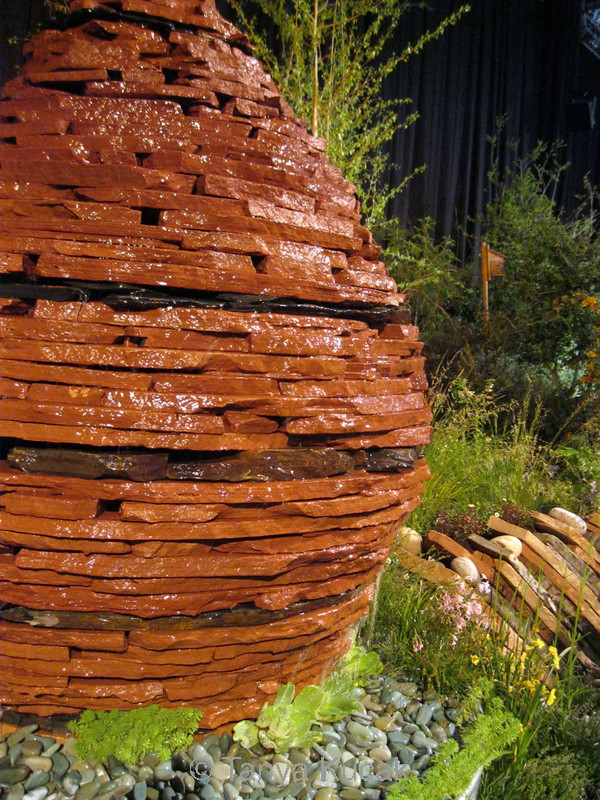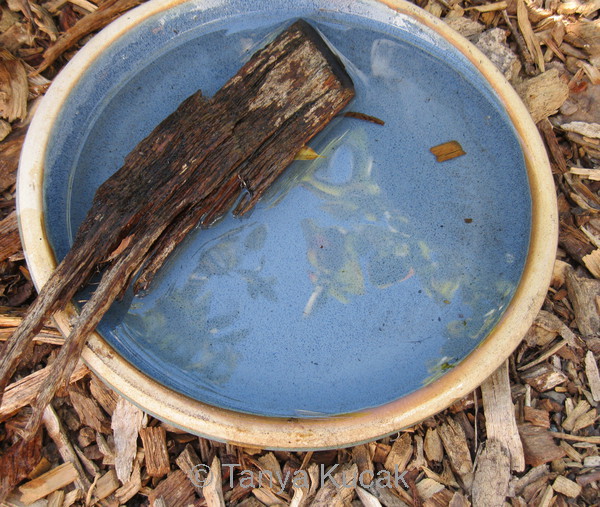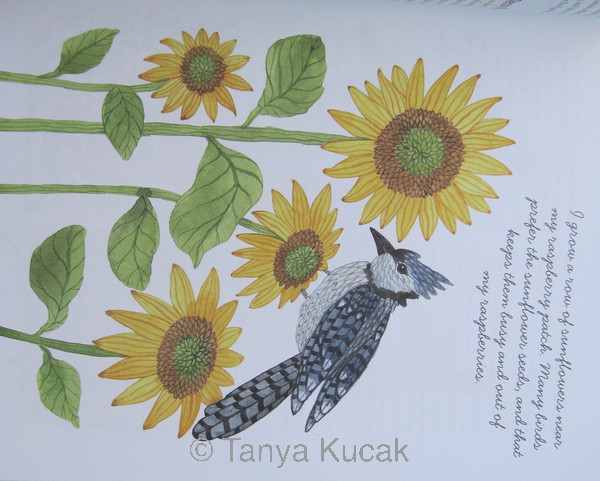
Providing habitat and food for wildlife is a primary motivation for growing native plants. But if you also grow edibles for yourself, you don't want the wildlife to feast on all of your crops as well.
I provide saucers of water in my gardens so that the birds and other critters won't have to sample nearby vegetables to get some moisture. Water is essential to life. During the drought, it pays to be especially attentive to the needs of the birds, bees, and butterflies who visit your plants as well as the plants themselves. In smaller vegetable gardens, I include a patch of hummingbird sage, hummingbird fuchsia, yarrow, or other small perennials for pollinators and birds. Even better would be a hedgerow with a variety of native shrubs, providing a buffet of berries and blooms year-round.
Growing vegetables and welcoming wildlife are indeed compatible pursuits. I've been enjoying the tips in The Wildlife-Friendly Vegetable Gardener: How to Grow Food in Harmony with Nature by Tammi Hartung (Storey, 2014). Hartung owns a 5-acre farm in Colorado that is mostly unfenced, so she has learned how to divert attention away from her crops, discourage predation on the foods she wants to harvest, and still welcome wildlife.
The book is a delight to read straight through, sprinkled with charming illustrations by Holly Ward Bimba, and its index is good enough to direct you to a specific topic. Hartung has the sensibility of a native-plant gardener in her appreciation for wildlife, and the vigilance of a vegetable gardener in her attention to the well-being of her edible plants.
One of her best suggestions is to keep a nature journal, where you note such things as when you saw the first lady beetles, or where the towhees built nests and when the chicks fledged, or the date that favorite plants started blooming. It's an exercise in paying attention, and the benefit of writing things down is that you can revisit last month's or last year's garden.
Most of the chapters deal with how to encourage wildlife in the garden, from soil life to pollinators and other beneficials, and how to create habitat. In the chapter on peaceful coexistence, Hartung encourages tolerance of cosmetic, minor, or short-term damage, and she offers strategies for “redirecting problematic insects and animals without harming the natural cycles in the garden.” These strategies include the following:

Andrea Hurd of Mariposa Gardening and Design created this dry-stack fountain both for visual appeal and to provide water for a range of wildlife. Bees like a trickle, birds can bathe in the gentle drips, and frogs enjoy the moist areas at the base of the fountain.

Bees and butterflies need shallow water, such as a saucer with sand and pebbles, or else a way to climb out of the water. They can easily drown in a container that is too deep or that has slick sides. Placing a large piece of mulch in this saucer enables critters to climb out of the water easily.

“I grow a row of sunflowers near my raspberry patch. Many birds prefer the sunflower seeds, and that keeps them busy and out of my sunflowers.” – Tammi Hartung in The Wildlife-Friendly Vegetable Gardener (Illustration by Holly Ward Bimba)
© 2015 Tanya Kucak